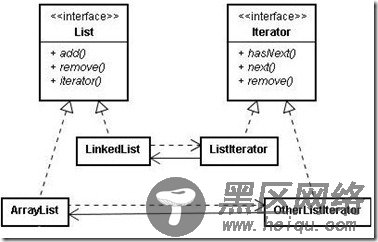迭代器(iterator)是一个可以顺序存取数据集合的对象。其一个典型的API是next方法。该方法获得序列中的下一个值。
迭代器示例
题目:希望编写一个便利的函数,它可以接收任意数量的参数,并为这些值建立一个迭代器。
测试代码好下:
var it=values(,,,,,,,,); it.next();// it.next();// it.next();//
分析:由于values函数需要接收任意多个参数,这里就需要用到上一节讲到的构建可变参数的函数的方法。然后里面的迭代器对象来遍历arguments对象的元素。
初步编码
function values(){ var i=,n=arguments.length; return { hasNext:function(){ return i<n; }, next:function(){ if(this.hasNext()){ return arguments[i++]; } throw new Error("已经到达最后啦"); } } }
用上面的测试代码进行测试
var it=values(,,,,,,,,); it.next();//undefined it.next();//undefined it.next();//undefined
错误分析
代码运行结果并不正确,下面就对初始的编码程序进行分析。
function values(){ var i=,n=arguments.length;//这里没有错误,arguments是values里的内置对象 return { hasNext:function(){ return i<n; }, next:function(){ if(this.hasNext()){ return arguments[i++];//错误出现在这里,arguments是next方法函数的内置对象。 } throw new Error("已经到达最后啦"); } } }
这里的指代错误,很像是另一个让人头痛的对象this。处理this的指向时,通常是使用变量和保存正确的this。然后在其它地方使用这个变量。那么arguments对象的解决方案就出来了,借助一个变量来存储,这样arguments对象的指代就没有问题了。
再次编码
function values(){ var i=,n=arguments.length,arg=arguments; return { hasNext:function(){ return i<n; }, next:function(){ if(this.hasNext()){ return arg[i++]; } throw new Error("已经到达最后啦"); } } }
运行测试代码
var it=values(,,,,,,,,); it.next();// it.next();// it.next();//
结果和预期的相同。
提示
当引用arguments时当心函数嵌套层级
绑定一个明确作用域的引用到arguments变量,从而可以在嵌套的函数中引用它
附录一:迭代器
迭代器(iterator)有时又称游标(cursor)是程序设计的软件设计模式,可在容器上遍历的接口,设计人员无需关心容器的内容。
迭代器UML类图
迭代器js实现
对设计模式了解一点点,但具体项目中,有得多的也就是工厂模式,其它很少用,下面是一个简单的实现,不对的地方,欢迎交流。
代码如下
function List(){ this.data=[]; } List.prototype={ add:function(){ var args=[].slice.call(arguments) this.data=this.data.concat(args); }, remove:function(i){ this.data.splice(i,); }, iterator:function(){ return new Iterator(this); } } function Iterator(list){ this.list=list; this.cur=; }; Iterator.prototype={ hasNext:function(){ return this.cur<this.list.data.length-; }, next:function(){ if(this.hasNext()){ return this.list.data[this.cur++]; } throw new Error('已经到底了~'); }, remove:function(){ this.list.remove(this.cur); } } var list=new List(); var it=list.iterator(); list.add(,,,,,,,,); it.next();// it.next();// it.next();//
以上所述是小编给大家介绍的JS中使用变量保存arguments对象的方法,希望对大家有所帮助!
您可能感兴趣的文章:

